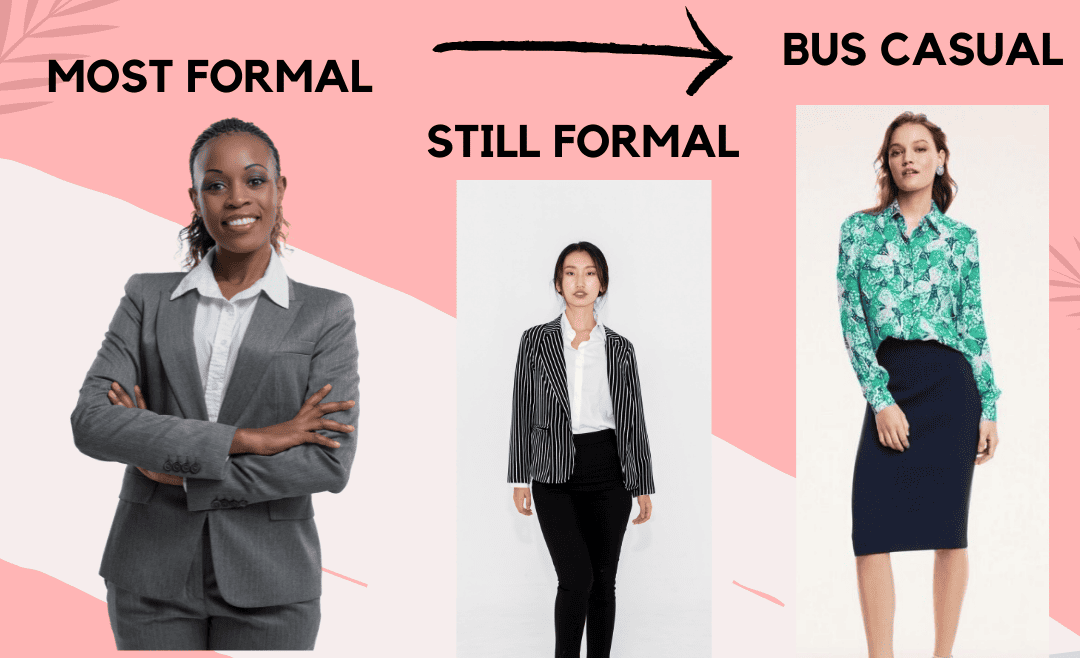You are not alone in thinking that business dress and business casual have melded together and both simply fall into the “business look” category. Although it’s true that in the past there was more of a distinction between the two, there are still significant differences between business dress, and business casual. There are also differences on when each should be worn.
Conservative and Tailored
The first difference between business dress and business casual is that business dress is more conservative and tailored. Business dress is comprised of basic pieces such as blazers, straight leg pants and collared shirts. If you’re looking to add current trends to your outfit, and the pieces are more drapey or flowy, chances are it’s a business casual look.
This is not to say that business dress can’t be on trend; it’s simply that the clothing is more tailored, with straight lines and fewer details. This leaves less room to be super stylish with added trends (although it can be done). Conversely, if your outfit is focused on newer details such as flutter sleeves, smocking or crochet it more likely falls into the business casual category, not business dress.
Neutral vs. Bright Colors
The second difference is that business dress consists of more neutral colors, such as navy, white, gray and black, while business casual includes more bright colors, pastels and patterns. A trend in dressing now is wearing a combination of electric neon shades so as to achieve the “dopamine look”. This presumably would result in an uptick in good moods, so as counteract some of the current bad news, however there are no statistics on this. Dopamine dressing would, however, put you squarely in the business casual category. Similarly, bright floral and psychedelic patterns would almost always fall into the business casual realm.
Blazer, Vest or Cardigan
Lastly, business dress usually includes a third layer, such as a blazer, vest or cardigan. These pieces can be part of business casual too, but the more structured your blazer, or vest is, the more likely you are wearing business dress. A cardigan is not structured, so if the rest of our outfit is structured or tailored, you are in business dress. If the entire look is soft and flowy, it’s business casual. Similarly, if you are wearing a top or blouse without a jacket, cardigan or vest, or a more casual dress, you are in business casual.
As far as when to wear which style, it’s important to consider your daily plan of activities, who (if anyone) you’re meeting, and the purpose of the meeting. Working from home, or busy work in the office, go with business casual. Seeing a client, giving a presentation, or for an interview, I suggest business dress. In addition, consider your industry, and geographical considerations. The good news is that business dress, and especially a blazer, is flattering – a blazer will emphasize your waist, and cover any imperfections below the waist. On a final note, it might be helpful to think of business dress as a uniform: pants or skirt, blouse or top, jacket or cardigan. Business casual is more relaxed, and thus has added room for individuality.


